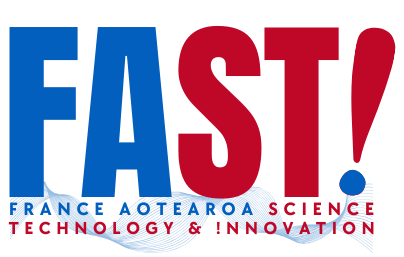Congratulations to our 4 winners of FAST! My thesis in 5 min competition!
They all kindly agreed to shared their abstract and their videos below so you can all discover their research project linking France and New Zealand!
Ellorine Carle, MSc Student
Resolving landscape dynamics in the Fox Glacier/Te Moeka o
Tūawe Valley with remote sensing and 3D-change detection
The Fox Glacier valley, located in the West Coast region of New Zealand, is a dynamic landscape
encompassing active landslides, fast moving glaciers, and a complex braided river system.
Gravity-driven mass movements of sediment, ice, and water propel evolution of the area’s
landforms. Signs of increasing instability of ice and sediment in the catchment include the rapid
retreat of Fox Glacier since 2008 and increasing activity on several landsides. Quantifying changes
in this area is important to advancing understanding of landscape processes, particularly in the
context of climate change. Recent operational and emerging remote sensing techniques provide
repeated accurate topographic mapping which enables fine-scale, comprehensive, and efficient
monitoring of dynamic landscapes. High spatial resolution digital surface models (DSM) and
orthoimagery derived from stereoimagery captured by the Pléiades 1A/B and Pléiades Neo satellite
constellations are paired with geospatial analysis tools to detect 3-D landscape changes between
2017 and 2022. In quantifying elevation changes and ground displacement velocities, this study
aims to resolve a catchment-wide sediment budget, compare the relative drivers of mass
movement, and investigate the potential and limitations of these methods.
Video here
Léa Cassé, PhD Student
Maureen Duflot, PhD Student
Fishery is one of the major activity worldwide. Fishing and fish processing provide
jobs for millions people. Consumers expect safe and healthy fishery products. However,
some of the most important fish species caught by the industries are at risk of carrying
parasites. Indeed, fish can harbor a wide variety of parasites. To date, some are still widely
unknown, especially for their zoonotic potential. Parasites of the genus Cryptocotyle are
potential zoonotic trematodes present worldwide in many fish species. So far, its impact
on human health is still unknown. Moreover, few publications deal with its recovery,
identification and distribution. My thesis focused on characterizing the distribution of
these parasites among commercially important fish. During my PhD, I was invited to an expert workshop on host-parasite relationships. This is where I meet Dr. Amandine Sabadel from University of Otago and we decided to turn our love of parasites and marine ecosystems into a collaboration. I master the state-
of-the-art of marine parasite identifications and she experts in compound-specific isotope analysis techniques, therefore allowing us in reconstructing energy links between species,
or species and their environments. This video present the beginning of this amazing
collaboration on Europe and New Zealand marine parasites.
Video here
Anne-Claire Mauger, PhD Student
Pounamu manufacture and the archaeology of Māori society in East Otago.
Ko te whakairo o te pounamu mō te mātai whaipara tangata o te porihanga Māori ki te tai rāwhiti o Otago.
In the 19th and early 20th centuries, multiple campaigns of fossicking in Otago extracted a large quantity of pounamu, now partially deposited in museums, with little regard to tangata whenua and the archaeological context. Only few excavations were carried out since then to provide a secure chronology to these taonga. Consequently, little is known of the context of pounamu manufacture, including raw material selection and typo-technological choices. This project aims to understand when and how pounamu became a significant taonga in southern Māori society, by reconstructing manufacturing processes, and their chronology through the analysis of available and new radiocarbon information.
Video here

Recent Comments